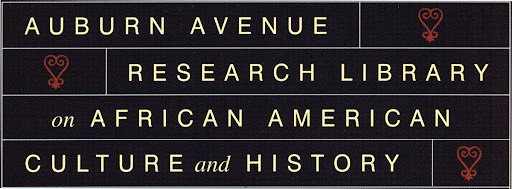Rutherford’s views on the Civil War are immediately hinted by her designation for it in the first volume of her “scrapbook”: The Causes That Led to the War Between the States (1923), one of the holdings of the AARL archival collections. Covering topics that highlight the contentious events splitting the northern and southern states leading up to the bloody conflict, Rutherford recasts history in the light of an explanation that espouses the “Lost Cause," a term that describes a set of beliefs conflating religion with ideology. Proponents of the Lost Cause espoused a heroic interpretation of the South’s involvement in the Civil War. For instance, under her heading about “The Cotton Gin,” Rutherford notes that its “invention undoubtedly led to jealousy,” implying that the warmer climate of the South and its dependence on “free labor” (her euphemism for the work extracted from enslaved peoples) led to more political power for the South (6-7). In her pamphlet, Rutherford not only focuses on her version of the political and economic events leading up to “War Between the States,” but also spars with the ghosts of literary and social history, questioning the accuracy of Harriet Beecher Stowe’s depiction of slavery, while not denying the book's efficacy in garnering support for the abolitionist cause: “In 1852 ‘Uncle Tom’s Cabin’ appeared. This was such a misrepresentation of the institution of slavery in the South that it brought just indignation to Southern people” (9).
On the other hand, historian Pero Gaglo Dagbovie (2004) situates Laura Eliza Wilkes within “the ranks of early black women ‘historians without portfolio,’” a term used by Earl E. Thorpe to describe a “group of nonprofessional persons […] who have a fondness for the discipline of history, feeling that their life experiences peculiarly fit them for chronicling some historical events” (243). In his article, “Black Women Historians from the Late 19th Century to the Dawning of the Civil Rights Movement,” Dagbovie shows that Wilkes sought to highlight the sacrifices of African American soldiers in fighting for the United States in World War I and prior wars, thereby demonstrating “to white Americans that the denial of fundamental citizenship rights to African Americans was unjust” (249). Along with three early editions of each of Frederick Douglass’s biographies, Narrative of the Life of Frederick Douglass, An American Slave (1845), My Bondage and My Freedom (1855), and Life and Times of Frederick Douglass (1882), the AARL Archives division also owns the first of Wilkes’s pamphlets, The Story of Frederick Douglass: With Quotations and Extracts (1918), initially copyrighted and published by Howard University in 1899 (Dagbovie 2004, 248). In the Preface, Wilkes outlines her audience as “the young folks of the race, because I believe the life of Frederick Douglass will serve as an inspiration to every schoolboy and girl.” In this condensed version of Douglass’s story, Wilkes emphasizes his attempts to further his own education as a boy and young man (9, 11). She ends her sketch of his life with a written portrait, a fitting tribute to Douglass’s attempts at both visual and verbal self-fashioning in his autobiographies, which also foreshadows the beautiful woodcut illustrations of Michael McCurdy’s later version of Douglass’s life as juvenile literature: “Personally he had a magnetic force which drew all to him—of noble bearing, a physique of handsome proportions, crowned by a glorious head of silvery-white hair” (14).
Rutherford and Wilkes’s projects were strikingly different, one retrogressive and backward-looking, the other progressive and forward-thinking. While Rutherford was an outspoken “anti," Wilkes championed Douglass for his support of woman’s suffrage. In supporting the “Rightful Place” of the South in history (words used in the title of one of her books), Rutherford emphasized the divisions between the states according to their placement relative to the Mason Dixon line, whereas Wilkes, writing in the nation’s capital, presented a wider scope of place and time, following the international movements of Douglass’s life. Wilkes’s work was recommended in the Crisis, the journal of the NAACP edited by W. E. B. Du Bois, while Rutherford compiled her own list of “Books for Southern Libraries,” including Thomas Nelson Page’s Two Little Confederates (20-21). Thus, Robert S. Levine’s description of identity as unstable within autobiography in his discussion of Frederick Douglass’s work could also apply to the re-writing of history: “it is tied to the contingencies of the historical moment and to the problematics (and challenges) of the autobiographer’s art” (31).
References
Dagbovie, Pero Gaglo. "Black Women Historians from the Late 19th Century to the Dawning of the Civil Rights Movement." Journal of African American History 89, no. 1 (2004): 241-261.
Levine, Robert S. "Identity in the Autobiographies." In Cambridge Companion to Frederick Douglass, Maurice Lee, 31-45. Cambridge: Cambridge University Press, 2009.
"The Looking Glass." Crisis 16, no. 6 (1918): 276-279.
Marshall, Anne E. "Mildred Lewis Rutherford." New Georgia Encyclopedia. Accessed October 29, 2011. http://www.georgiaencyclopedia.org/nge/Article.jsp?id=h-3178.
McCurdy, Michael, ed. Escape from Slavery: The Boyhood of Frederick Douglass in His Own Words. New York: Knopf, 1994.
Williams, David S. "Lost Cause Religion." New Georgia Encyclopedia. Accessed October 29, 2011. http://www.georgiaencyclopedia.org/nge/Article.jsp?id=h-2723.
Posted by Joy Bracewell, AARL Intern




